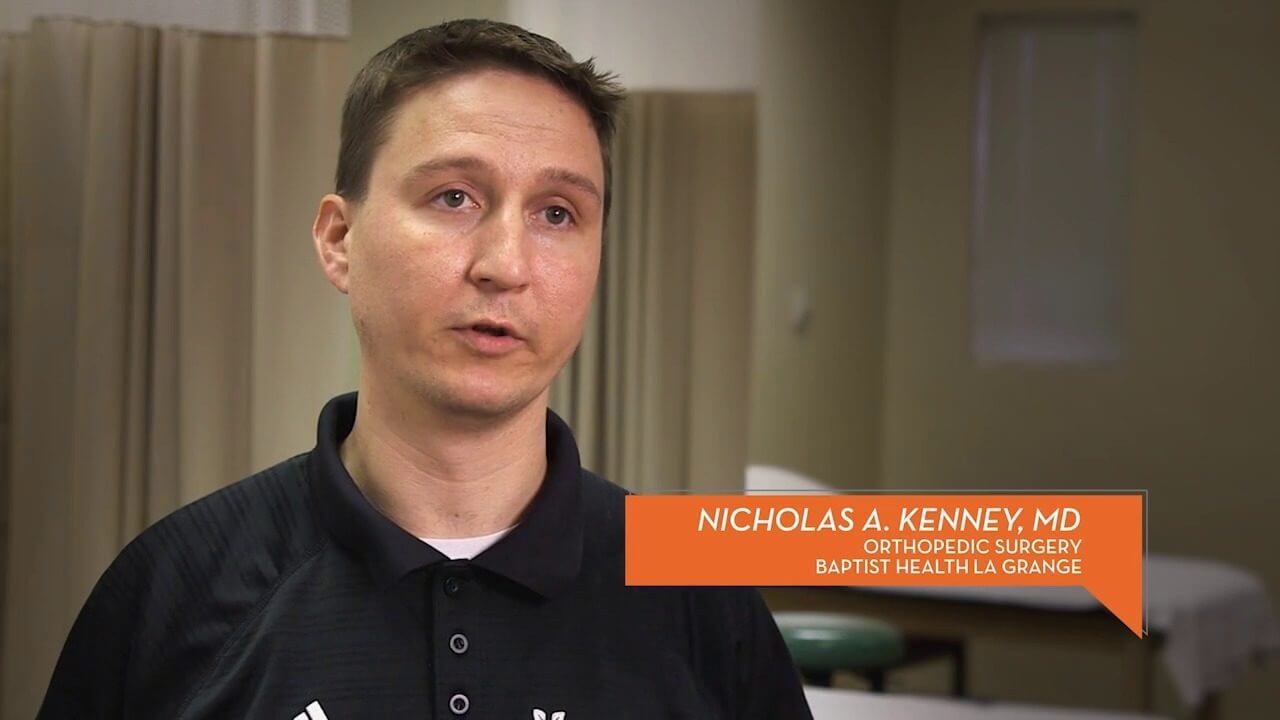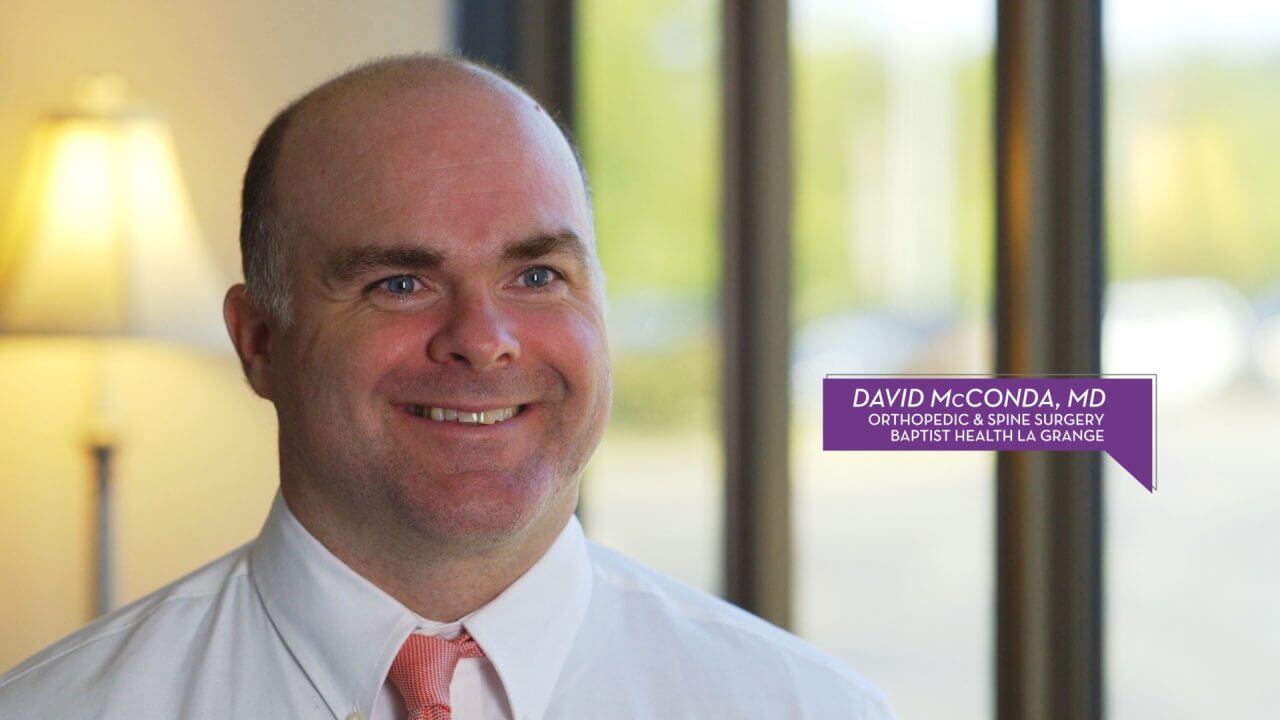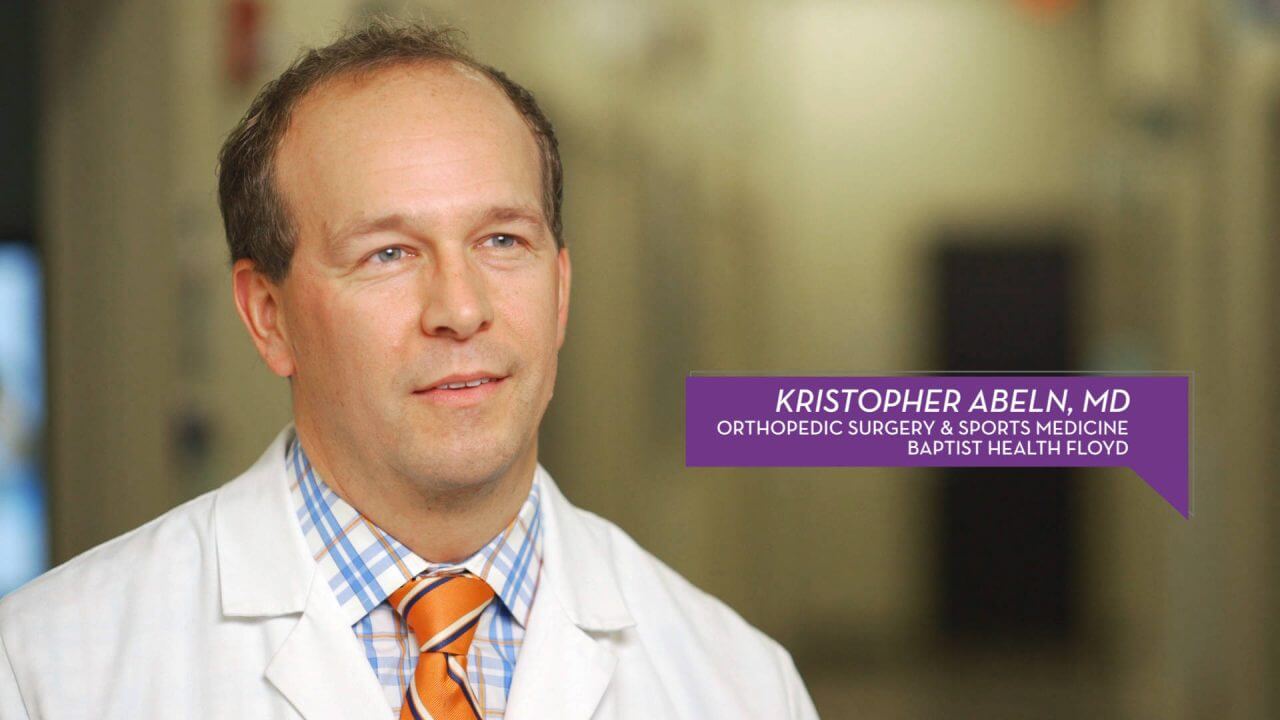ACL Surgery Recovery & Physical Therapy Timeline at La Grange
Baptist Health La Grange: ACL Surgery Recovery & Physical Therapy Timeline
Watch a patient’s story of how advances in ACL surgery recovery impacted her experience. Baptist Health offers new advances in ACL surgery and physical therapy to encourage faster recovery for patients.
ACL Surgery Recovery & Physical Therapy Timeline at La Grange HealthTalks Transcript
Allison Vialpando, Buckner, Kentucky:
I got injured at the Kentucky high school state tournament, running the bases. I was rounding first, and my knee stayed in place as my body went in one direction. My knee kind of just popped.
Nicholas Kenney, MD, Orthopedic Surgery:
When a patient tears their ACL, the main option available to them, particularly if they want to stay active, is a reconstruction of their ACL where we actually give them a new ACL.
After surgery, we try to start with therapy within the first three to four days to try to get the knee moving as quickly as possible to decrease their swelling as soon as possible, which helps their pain and helps their mobility as well.
Andrew Stethen, PT:
With Allison’s plan initially after the surgery, we wanted to control pain, control swelling, wound care, early range of motion, early strengthening, some muscle facilitation. Once you get ahead of the pain and swelling, you can progress those exercises to more advanced strengthening and range-of-motion exercises, working into balance coordination, things like that, challenging her along the way.
After about six months, we have a specific ACL test that we put her through that will test her ACL and how well she could control her knee under certain situations. If she passes that, she’ll get a functional ACL brace, and then she’ll be cleared to play.
Vialpando:
I feel really good. I’m still very hesitant at times because I don’t want it to happen again, but I’m learning to trust my knee again, and I’m just ready to play.



